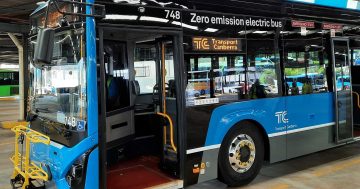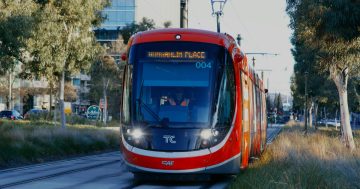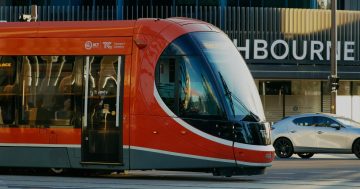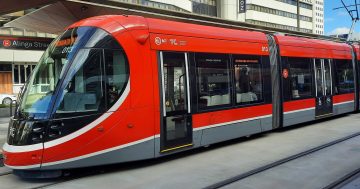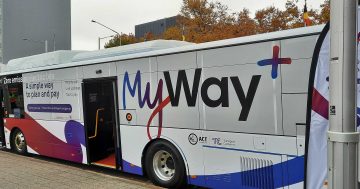
Light rail is now more of an attraction in Tuggeranong but it’s the door-to-door commute times that count. Photo: File.
A new community survey in Tuggeranong has shown a turnaround in support for light rail in the Valley, with almost three-quarters of people wanting light rail to proceed to Woden and then on to Tuggeranong.
The previous Tuggeranong Community Council survey showed a majority against light rail and might reflect growing acceptance of it as a mass transit technology.
But before the Government celebrates, it should take a deeper look at the survey results which also show that three-quarters of respondents drive their own car to work and that 40 per cent said they no longer use public transport since the bus network changes.
It also revealed that 43 per cent who do take the bus say their journeys are now longer.
More people work in Civic (25 per cent) than in Tuggeranong, reflecting the Valley’s large commuter population.
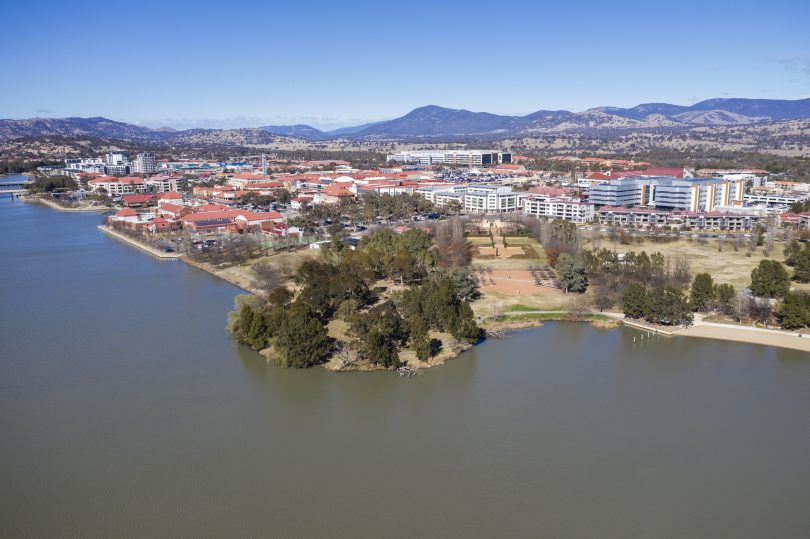
Tuggeranong Town Centre is on the edge of the Valley’s core population. Photo: File.
When asked about What improvements would make the current bus network and timetable for the Tuggeranong region better?, the overwhelming response was for more and more frequent buses and better routes.
A few commented that there should be more express services and services on the weekend, better connection times, and more direct routes to the city, the council says.
Community council president Jeffrey Bollard says people are agnostic about how they travel, it’s the door-to-door commute time that counts.
”If light rail was a fast, efficient link between the Tuggeranong Valley, Woden, Civic and other parts of town, people would be keen for it,” he said.
Mr Boll said feelings were mixed but people thought if there was going to be light rail to Woden, Tuggeranong should not be isolated.
READ MORE:
The bus changes, with its emphasis on Rapid routes at the expense of local ones, meant many people now had long walks to a Rapid stop or were having to backtrack to pick up a Rapid bus.
He said buses servicing west Kambah area were also now not going straight to Woden but via Weston Creek.
”We’re getting different sorts of commute times, you’ll see that the travel times have basically gone up for people using public transport,” Mr Bollard said.
He said light rail would also face the same problems as buses due to Tuggeranong’s layout, road network and lack of a central hub.
”Quite frankly if you bring light rail onto Tuggeranong, where does it go though to capture people,” Mr Bollard said.
”Our town centre is on the edge of the population centre as opposed to other town centres.”

The light rail network envisaged so far. Image: ACT Government.
If there was a line from growing Greenway to Woden, people were going to end up backtracking to get on to the light rail, Mr Bollard said.
The government is developing light rail Stage 2 to Woden in two stages – the first to Commonwealth Park, and then across the lake through the Parliamentary Zone.
Stage 2A is expected to be running by 2024. The more complex and expensive Stage 2B is going through the approvals process with the Commonwealth.
Any extension to Tuggeranong will have to wait for Stage 3 linking the city to Belconnen.
The ACT Government’s $14 billion Infrastructure Plan says Stage 3 would then extend to Canberra Airport via the Russell Defence precinct.
It says a line to Belconnen will link key facilities like Calvary Hospital, the University of Canberra, the Australian Institute of Sport and the Australian National University, and with 30,000 new residents at Ginninderry in the coming decades, it was the ‘natural choice’ for Stage 3.
Stage 4 to the Tuggeranong Town Centre will travel via Mawson, and will set off a new round of development along the line that the plan says will support local businesses and provide an economic boost for group centres in Mawson, Wanniassa and Kambah.














